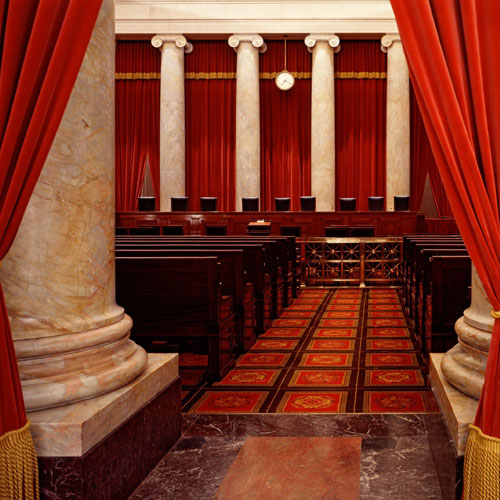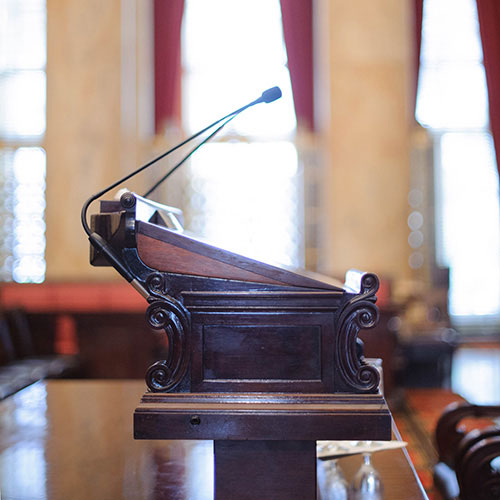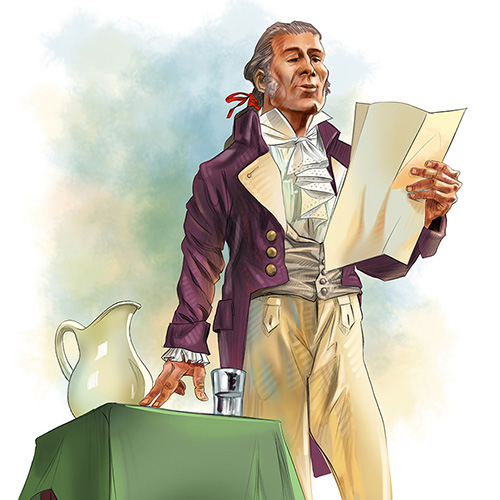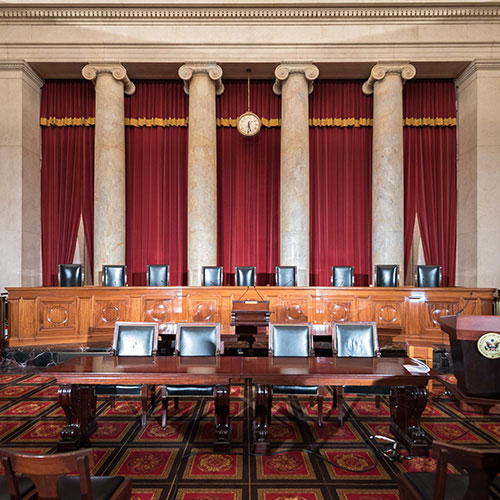Rhode Island Program Schedule, April 14-18, 2025
Summary of the Program
The Society partnered with the U.S. District Court for the District of Rhode Island to bring 30 high school students from 14 different high schools in the greater Providence area into their federal court house over Spring Break. Over the course of the five-day program, the students did an intensive study of the Judicial Branch through the lens of Rhode Island v. Innis, a local Fifth Amendment case that made it to the Supreme Court in 1980. During the program, the students learned from:
- All 3 Article III Judges
- 3 State Supreme Court Justices
- The acting US Attorney, Federal Defender, Chief Probation Officer, and District Clerk of Court
- 17 different local attorneys including Supreme Court advocate Marc DeSisto
- Numerous other members of the federal court staff from the pre-trial & probation, federal defender, U.S. attorney, U.S. Marshal, and District Clerk offices
Students also had the unique opportunity to attend a naturalization ceremony at Brown University, tour the Supreme Court of Rhode Island, and participate in a Moot Court with assistance from District Court Law Clerks, local private attorneys, and District Judge Melissa DuBose who served as the Chief Justice.
As a culminating capstone activity, students created a five-panel exhibit that will be displayed in the U.S. District Courthouse. Each panel summarizes their new learning and the impact Rhode Island v. Innis has on their community and the United States. A formal opening of the exhibit is scheduled for the fall.
Student Quotes
"I would absolutely recommend the Hometowns program to my friends! Regardless of if you are interested in the law you should learn about the way the judicial branch works in our country because it will at some point affect you, and you should know what's going on."
Gabby O.
“I learned a lot about the court like what an actual sentencing is like and how justices take things about a persons’ life into account and don’t just go off a paper with guidelines. I also learned that there isn’t one set path to becoming a lawyer and a judge, that you can major in just about anything and still make it there.”
Christopher F.
“My biggest takeaway is that there are strong representatives from each side of the case in a trial, in which both the defendant and the constitution are being represented. The criminal defense lawyers are supporting their clients and trying to use the constitution to their benefit, while the prosecutors aim to find an appropriate sentence for the defendant based on the severity of their crimes.”
Isabel S.
“During the moot court, I loved being able to present my argument at the podium and gain the experience of facing questioning and having to think quickly in the moment to further defend my point.”
Keely S.
“My favorite part of the program was visiting the RI Supreme Court and Brown University. It was super fun to explore other places and hear from people that don’t work in the Federal building. It was also very heartwarming to see the naturalization ceremony and be a part of that.”
Charlotte H.
"The moot court was definitely my favorite part of the program, along with the reenactment of the Innis Superior Court case. I liked getting to act out a court case and see how others responded. My role as a judge during the moot court also allowed me to view other people who were on the prosecution and the defense side. The case reenactment was interesting to listen to as well, and I liked hearing how things happened during the case."
Madelyn L.




